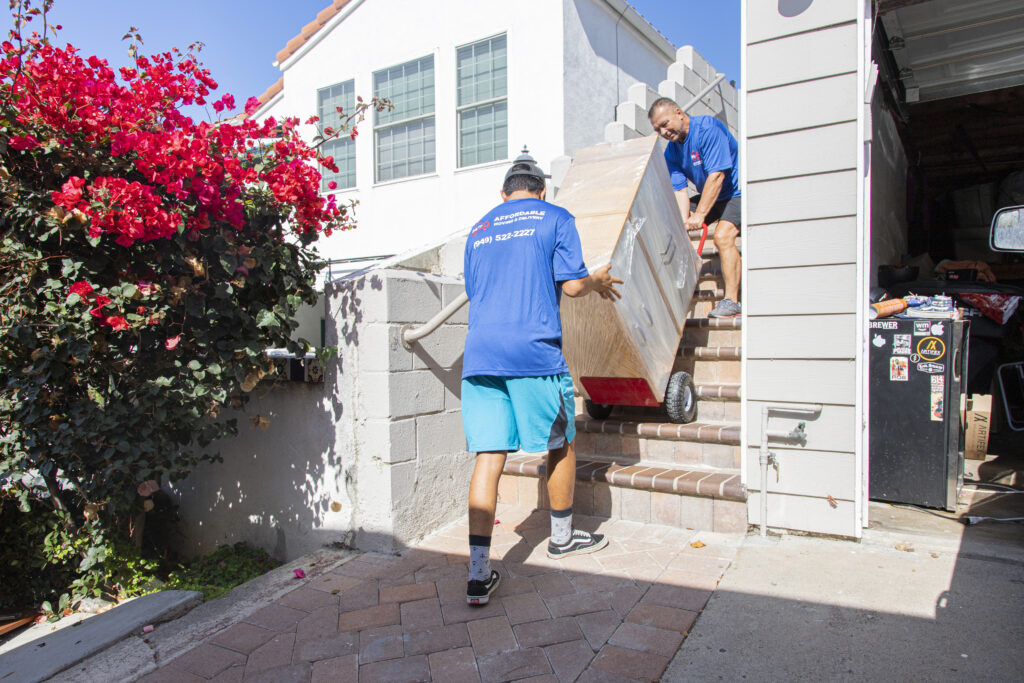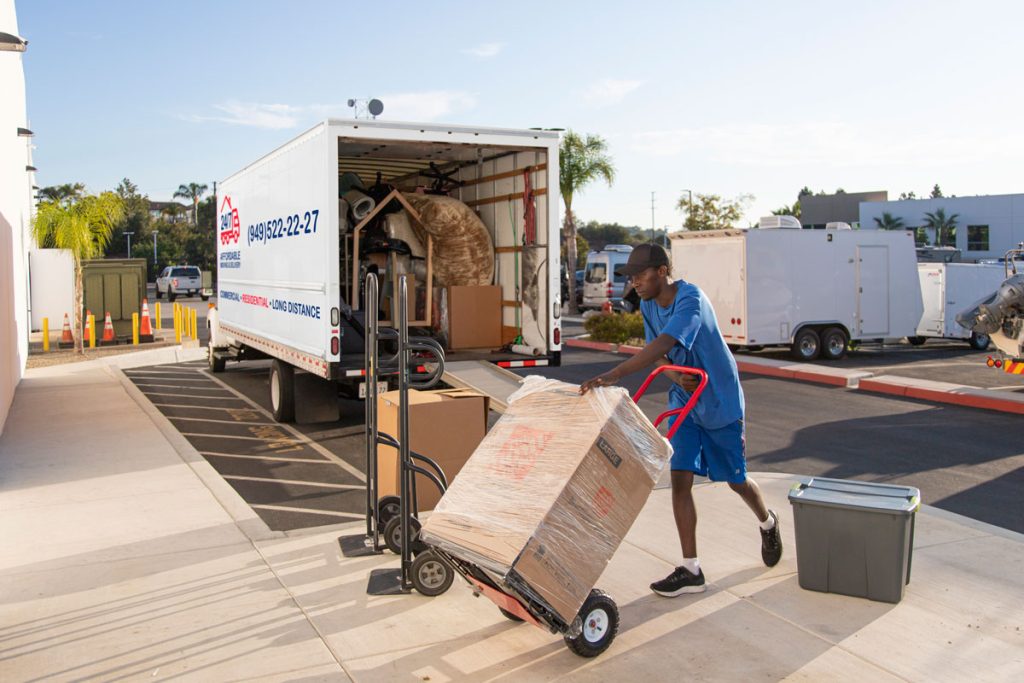How to Prepare Your Large Appliances for a Move

The thought of moving large appliances can make your head spin. However, proper organization of this task will help you do this without a scratch. Roll up your sleeves and prepare to move your bulky home appliances.
Transporting appliances
Before relocating large appliances, it is necessary to prepare them for a road:
- Unplug all your appliances at least 24 hours before the move. This gives refrigerators and freezers time to defrost. Make sure to carefully disconnect appliances like washing machines and dryers as the last thing you want is any water leaks during the move.
- Clean and dry your appliances thoroughly — crumbs in the toaster or leftover food in the microwave could attract pests.
- Wrap appliances in blankets or bubble wrap to prevent scratches or dents. Secure the doors with strong tape but don’t forget to leave the refrigerator door slightly open for ventilation.
- If you’re feeling apprehensive about moving these bulky items yourself, remember that Affordable Moving & Delivery offers a complete range of moving services. We’ve got experienced teams in various locations, including Aliso Viejo, Anaheim, and Buena Park, just to name a few. Our movers can help you pack, load, transport, and even unpack your items, whether you’re moving locally or between the states.
Moving is a fresh start and your chance to make new memories in your new home. That’s why it is important to plan ahead and think about many aspects of your relocation, including safety.
Safety first: disconnecting gas appliances
Safety should always be your number one priority, especially when you’re dealing with gas appliances. Before you start disconnecting them, make sure you know where the main gas supply valve is in your home. You’ll need to shut this off to prevent any gas leaks while you’re disconnecting your appliances. If you’re not sure where the valve is, it’s usually located outside your house near the gas meter.
When you’re ready to start disconnecting, first turn off the gas supply to the specific appliance you’re working with. Most appliances have a shut-off valve located behind or underneath them. Once you’ve done that, you can begin to disconnect the appliance from the gas line. This might involve unscrewing a few nuts or bolts, so prepare a wrench. Don’t rush, and if you’re unsure about something, it’s better to consult with a professional.
Once you’ve disconnected your appliances, they should never be reconnected by anyone other than a qualified professional. So, when you reach your new home, make sure you hire a certified technician to reconnect your gas appliances for you. It’s not worth risking your safety to save a little money.
Cleaning Appliances Before Moving
Cleaning is not everyone’s favorite task but it is essential before moving. This guide will help you clean your appliances properly:
- Start by emptying your appliances. Remove any food from your fridge or freezer, dishes from your dishwasher, and clothes from your washing machine or dryer.
- Next, it’s time to do some serious scrubbing. For most appliances, use warm soapy water and a sponge. For stubborn stains or burnt-on food in your oven, prepare a specialized cleaner to make them look as good as new.
- After cleaning, you should deodorize your appliances. A simple solution of baking soda and water can help remove any lingering smells. Just remember to rinse and dry thoroughly afterward.
- Any leftover moisture can lead to mold or mildew during transit, so make sure your appliances are completely dry before moving.
- Do a final check. Look for any missed spots or hidden compartments that might still need cleaning.
It’s always nice to unpack clean, fresh-smelling appliances. So, turn on your favorite tunes and make a fun day out of it. But doing this, don’t forget about appliances that require special attention, like a washing machine.
Draining a Washing Machine
A washing machine should be drained before the move. If you are wondering how to drain a washing machine before moving, we’ve prepared this guide for you:
- To start preparing your washing machine for moving into a new house, unplug it from the electrical outlet. Then, turn off the water supply. You’ll usually find two valves behind your washer — one for hot water and one for cold. Simply turn them clockwise to shut them off.
- Now, carefully detach the hoses from the water supply. Water will likely start to drain out, so be ready to catch it.
- You’ll need to drain any remaining water in the tub. If your washer has a drain setting, select it and let the machine do its thing. If not, you may need to manually remove the water with a wet/dry vacuum.
- Once all the water is drained, leave the washer door and detergent dispenser open for a while to allow everything to dry out completely. Any leftover moisture can lead to mold or mildew.
- Don’t forget to secure the drum. Many washing machines have transit bolts to keep the drum from moving during transport. If you’ve kept them, screw them back in place.
Now that you know how to drain a washing machine before moving, it’s protected from any damage during the relocation. And, after all, it would be pleasant to have a clean, dry washing machine ready to go in your new home. Not only a washing machine but a dishwasher as well.
Preparing Dishwashers for the Move
This is how you can prepare your dishwasher for the big move:
- Make sure your dishwasher is completely empty — check all the racks and the utensil holder.
- Clean the inside of your dishwasher with soapy water and a sponge. Pay special attention to the door seal and the filter, as they can often harbor food particles and soap scum.
- Run a final cycle without any dishes in a dishwasher. You can add a dishwasher cleaner or a cup of white vinegar to get rid of any lingering odors or grease.
- After the cycle, disconnect the dishwasher from the power source and shut off the water supply. Then, carefully remove the drain hose and allow any remaining water to drain out into a bucket or a towel.
- Leave the dishwasher door open for a few hours or even overnight to ensure everything is completely dry.
- Secure the dishwasher door. You can use a strong tape or a moving strap. Just make sure not to put the tape directly on the surface of the dishwasher to avoid any potential damage.
Now that you know how to prepare your dishwasher for the road, it’s time to unhook and pack a gas dryer.

Unhooking and Packing a Gas Dryer
If you are not sure about how do you unhook a gas dryer, follow these steps:
- Turn off the gas supply. This is important for safety reasons. Then, disconnect the dryer from the electrical outlet.
- Next, unhook the gas line. You might feel a bit nervous about this but don’t worry — just take it slow and steady. Use an adjustable wrench to disconnect the flex hose from the gas valve.
- Detach the vent hose which should be connected to the back of your dryer. Depending on your setup, you might need a screwdriver or pliers for this step.
- When everything is unhooked, clean your gas dryer. Remove any lint from the lint trap and use a vacuum to clean out the vent hose.
- If your dryer has transit bolts (they prevent the drum from moving during transport), put them in. If you’re not sure, check your owner’s manual or look it up online.
- Wrap your dryer in a moving blanket or bubble wrap to protect it during the move. Secure everything with moving straps or strong tape.
Remember, when dealing with gas appliances, think about your safety first. If you’re feeling unsure about any of these steps, don’t hesitate to call a professional.
Transporting Appliances Safely
Your home appliances are ready to relocate to your new home. If you’re a bit nervous about moving them, take into account our tips that will help you transport your appliances safely:
- Cleanliness is next to godliness, so don’t forget to clean your appliances. It maintains hygiene and saves you from unwrapping a moldy fridge at your new place.
- Secure any parts that might move around — this could be anything from the shelves in your refrigerator to the drum in your washing machine. Use tape or moving straps to keep them snug and secure.
- Wrap your appliances in moving blankets or bubble wrap to protect them from bumps and scratches during the move.
- Dolly is your best friend in moving your appliances. It’ll save your back, and make the whole process easier. Just remember to secure everything with moving straps.
- As you load your appliances onto the truck, make sure they’re well-secured and won’t go on a joyride when you hit the first pothole.
If all this sounds like a lot of work, consider hiring professionals. A reputable moving service like 24/7 Affordable Moving & Delivery can take care of everything for you. We’ve got experience in both residential and commercial moves, so we know how to handle your appliances safely.

